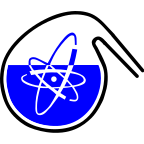Speaker
Description
At the very end of September and in October 2017 artificial radioactive isotope Ruthenium-106 has been detected in air over Europe. It was primarily found in Northern Italy and Central Europe.
Air filter samples were collected at the Institute of Nuclear Physics PAN in Krakow using aerosol sampler which works at nominal flow rate 500 m
Investigations showed that the highest concentration of
Preliminary results of conducted radiochemical analyses demonstrated that the highest activity concentrations of

